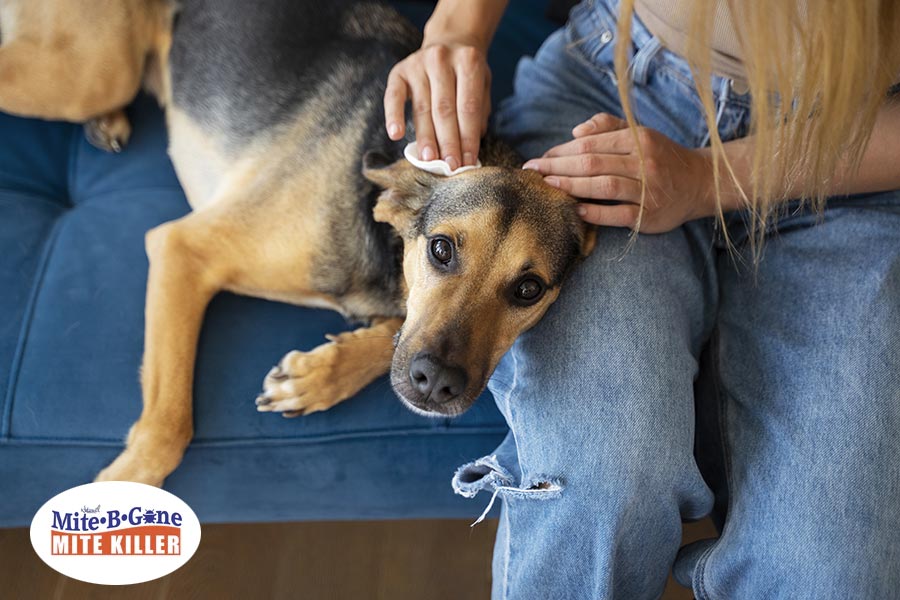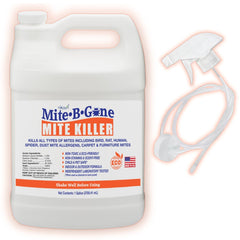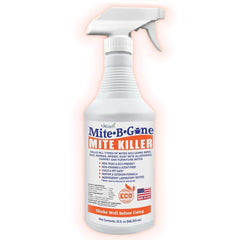Introduction
Ear mites, a common concern among pet owners, particularly affect cats and dogs. These tiny parasites can cause significant discomfort and health issues in pets. This article delves into the causes, symptoms, and treatment options for ear mites, providing essential knowledge for pet owners to ensure their pets' health and well-being.
What are Ear Mites?
Ear mites, known scientifically as Otodectes cynotis, are microscopic, spider-like parasites. They thrive in the warm, moist environment of an animal's ear canal, feeding on the skin and earwax. This infestation, resulting in otodectic mange, primarily affects cats and dogs but can also be found in other animals.
Causes and Risk Factors
Direct contact with an animal already infested with ear mites primarily spreads these parasites, making pets that frequently socialize or live in close quarters with other animals particularly vulnerable.
Young animals, such as kittens and puppies, are at a higher risk due to their less developed immune systems, which are less capable of warding off infestations.
Additionally, environments that house multiple animals, such as animal shelters, kennels, or even multi-pet households, can become hotspots for transmitting ear mites. Unclean living conditions further exacerbate this risk, as they provide an ideal environment for the proliferation and spread of these parasites. Regular cleaning and minimization of close contact with infested animals are crucial preventive measures.

Symptoms and Diagnosis
Ear mites in pets, particularly cats and dogs, manifest through visible and distressing symptoms. The most common indication of an ear mite infestation is excessive scratching of the ears. This incessant scratching is due to the intense itching caused by the mites moving and feeding inside the ear canal. Pets may also frequently shake their heads in an attempt to relieve discomfort. Another telltale sign is the presence of a dark, waxy discharge within the ears, which often resembles coffee grounds. This discharge combines ear wax, blood, inflammation by-products, and mites.
Persistent scratching and head shaking can lead to more severe complications. The constant irritation can cause skin infections in and around the ear. In more extreme cases, the vigorous shaking of the head can lead to ruptured blood vessels, resulting in a condition known as an aural hematoma, where blood collects between the skin and cartilage of the pet's ear flap, requiring veterinary intervention.
Diagnosing ear mites involves a veterinary examination. A vet will typically take a sample of the ear discharge and examine it under a microscope. This allows for the direct visualization of the mites, confirming their presence. Early and accurate diagnosis is crucial for effective treatment and preventing the progression of more serious conditions.
Treatment Options
When addressing ear mite infestations in pets, a multifaceted approach is often necessary to effectively eradicate the mites and soothe the accompanying symptoms. The choice of treatment largely depends on the infestation's severity and each pet's specific needs.
- Topical Medications: These are typically the first line of treatment. Apply ear drops or ointments directly to the affected area. These medications kill the mites and sometimes include anti-inflammatory agents to reduce irritation and itching. As per the vet's instructions, the application may need to be repeated over several weeks to ensure all mites, including eggs and larvae, are eradicated.
- Oral Medications: A veterinarian may prescribe oral medications if the infestation is severe or the pet does not respond well to topical treatments. These systemic treatments can be more effective in reaching mites deep within the ear canal or treating mites that have spread to other body parts.
- Over-the-Counter Products: Here at Naturasil we offer Mite-B-Gone a safe and effective treatment to help your cat or dog get rid of Ear Mites once and for all. With over 1 Million treatments sold over 20 Years we stand by our products and offer it in an easy to use spray bottle in multiple sizes. Use it on your pets, furniture and soft fabrics to rid your home of all mites and their eggs.
- Home Remedies: Some pet owners opt for home remedies, such as olive or almond, to smother the mites. While these can provide temporary relief, they are ineffective in eradicating infestation. It is crucial to seek a veterinarian's advice before trying any home remedy to avoid inadvertently worsening the situation or causing harm to the pet.
It's important to treat all pets in the household in all cases, as mites can easily spread from one animal to another. Following the treatment, thoroughly cleaning the pet's living environment is also essential to prevent re-infestation. The key to successful treatment is appropriate medication, vigilant application, and environmental management.
Prevention and Management
Prevention and management of ear mites in pets, primarily cats and dogs, require a proactive and thorough approach. Regular ear cleaning is essential; it helps prevent mite infestation and allows pet owners to notice any early signs of trouble. This routine should be gentle and performed with appropriate ear-cleaning solutions recommended by a veterinarian to avoid irritation.
Maintaining a clean living environment is equally crucial. To minimize the risk of mite infestation, regularly clean and sanitize bedding, play areas, and any shared spaces. This is particularly important if your pet interacts with other animals, as ear mites can easily spread through contact.
Regular veterinary check-ups play a pivotal role in the early detection and treatment of ear mites. Veterinarians can offer professional advice, diagnose issues early, and provide timely treatment. They can also guide pet owners on the best preventive measures tailored to their pet's specific needs and environment. Adhering to these practices ensures the health and comfort of pets, preventing the discomfort and complications associated with ear mites.
Conclusion
In conclusion to our exploration of ear mites in pets, it's imperative to emphasize the significance of timely action for the health and comfort of your cats and dogs. Ear mites, if left untreated, can lead to severe complications, including persistent irritation, infections, and hearing problems. As a responsible pet owner, being vigilant about your pet's ear health is crucial. Observing signs of distress, unusual ear discharge, or excessive scratching should prompt immediate consultation with a veterinarian.
Addressing ear mites is easier for cat owners with effective solutions like Cat Ear Mite Treatment, specifically formulated to combat these parasites. Similarly, dog owners can find relief for their pets using Dog Ear Mite Treatment, tailored to alleviate and prevent mite infestation in dogs. These treatments are designed to be safe and effective, ensuring your beloved pets get the care they deserve. Remember, proactive health management is key to a happy, healthy pet. Stay informed, and don't hesitate to seek professional advice for your pet's ear health.





